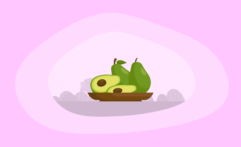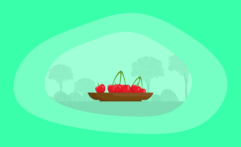Urban Farming vs Vertical Farming: What’s the Difference?
Impactful Ninja is reader-supported. When you buy through links on our site, we may earn an affiliate commission.
Learn more
Learn more
.
Hey fellow impactful ninja ? You may have noticed that Impactful Ninja is all about providing helpful information to make a positive impact on the world and society. And that we love to link back to where we found all the information for each of our posts. Most of these links are informational-based for you to check out their primary sources with one click. But some of these links are so-called "affiliate links" to products that we recommend. First and foremost, because we believe that they add value to you. For example, when we wrote a post about the environmental impact of long showers, we came across an EPA recommendation to use WaterSense showerheads. So we linked to where you can find them. Or, for many of our posts, we also link to our favorite books on that topic so that you can get a much more holistic overview than one single blog post could provide. And when there is an affiliate program for these products, we sign up for it. For example, as Amazon Associates, we earn from qualifying purchases. First, and most importantly, we still only recommend products that we believe add value for you. When you buy something through one of our affiliate links, we may earn a small commission - but at no additional costs to you. And when you buy something through a link that is not an affiliate link, we won’t receive any commission but we’ll still be happy to have helped you. When we find products that we believe add value to you and the seller has an affiliate program, we sign up for it. When you buy something through one of our affiliate links, we may earn a small commission (at no extra costs to you). And at this point in time, all money is reinvested in sharing the most helpful content with you. This includes all operating costs for running this site and the content creation itself. You may have noticed by the way Impactful Ninja is operated that money is not the driving factor behind it. It is a passion project of mine and I love to share helpful information with you to make a positive impact on the world and society. However, it's a project in that I invest a lot of time and also quite some money. Eventually, my dream is to one day turn this passion project into my full-time job and provide even more helpful information. But that's still a long time to go. Stay impactful,Affiliate Disclosure
Why do we add these product links?
What do these affiliate links mean for you?
What do these affiliate links mean for us?
What does this mean for me personally?
![]()
Finding solutions for a sustainable food future means looking at different solutions for food production in cities as well as in rural areas. And two of these solutions are urban farming and vertical farming. And with both of these growing strongly, we had to ask: What’s the difference between urban and vertical farming?
Urban farming and vertical farming are both types of farming found in cities. Urban farming is any food production in cities. Vertical farming involves stacking production in vertical space. Some urban farms may use vertical farming solutions, but not all urban farming is vertical farming.
When growing food in a city, choosing a type of farming suited to a particular site is key. Read on to learn more about urban farming and vertical farming, and to explore the different options for city-based food production.
How Are Urban Farming and Vertical Farming Defined
Farming in a city or town is, in general, referred to as urban farming. This is held in contrast to traditional field-based farming which takes place in centralized rural areas. When comparing the terms urban farming and vertical farming, it is important to understand that vertical farming is a subset of urban farming, because it is one of the solutions used for food production in urban areas.
However, vertical farming is not the only option for urban food production. By comparing vertical farming to other urban food production, we can understand the best food growing solutions for our cities.
What Does the Dictionary Say About Urban and Vertical Farming
Let’s have a look a the dictionary definitions for urban and vertical farming to get a quick overview first.
“Urban farming: a practice of raising food in urban or suburban areas, alongside the hustle and bustle of city life.”
Purdue University
While urban farming defines where food is grown, vertical farming defines how it is grown.
“Vertical farming: the activity of growing crops in many layers, one above the other, inside a building or under the ground, often in a specially controlled environment.”
Cambridge Dictionary
Since urban farming is defined as the practice of raising food (in any way) in a city, this includes vertical farming. However, urban farming is a much broader concept that could encompass a much wider range of farming techniques.
Moving beyond dictionary definitions, we can discover the best solutions for sustainable food production and bring security, resilience, and ecological harmony to city sites. It can be helpful to delve a little deeper to look at the many different forms that an urban farm might take.
Urban farms can be mini traditional farms, growing arable crops and even raising livestock in the same way as they are in the countryside in the heart of a busy city. They can also cultivate food in raised beds on domestic properties or in market gardens, rooftop farms, small orchards, or forest gardens… the options are incredibly varied and exciting.
What Do These Differences Between Urban and Vertical Farming Mean
All urban farming, vertical farming included, seeks to bring food production into the places where most people live.
What are the main advantages of urban farming?
- Urban farming brings food production into the heart of cities – allowing a closer connection between people and their food, and producers and consumers
- It can limit pressure on food supply chains and help in tackling the massive infrastructure gaps for growing cities
- Reduce environmental damage and degradation often caused by rural farming
What are the main advantages of vertical farming?
Vertical farming shares the advantages mentioned above. It can also often bring additional advantages, above and beyond those offered by urban farming in general. It can:
- Reduce the amount of land required for food production (meaning that the land can be used in better ways for people and the planet)
- Make use of brownfield sites, marginal spaces, and urban sites currently under-utilized or neglected
- Provide much higher yields per area than other forms of urban farming, while consuming fewer resources
- De-couple food production from seasonal variation, and insulate it from changing weather patterns induced by global warming
Vertical farming can be an important type of food production in cities. But it is important to look at a range of urban farming options when choosing the best solution for a particular site.
What Are the Key Differences Between Urban and Vertical Farming
When we are looking for the best solution for a city site, it can be helpful to look at how different types of urban farming compare in terms of environmental and sustainable outcomes.
| Urban Farming | Vertical Farming | |
| Space Usage | Small city spaces can be imaginatively used | Small space friendly, vertical farming, can make use of spaces (indoors spaces included) that cannot be used in other ways |
| Water Usage | Water use varies depending on solutions employed | Fewer water resources are typically used |
| GHG Emissions | Relatively low GHG emissions (can even be better than carbon neutral with the right strategies) | Relatively low GHG emissions (with the right strategies) |
| Food Miles | Low food miles – short supply chains between growers and consumers | Low food miles – short supply chains between growers and consumers |
| Packaging | Can be minimal depending on the decisions made by the business | Can be minimal depending on the decisions made by the business |
| Decentralization | Varied solutions allow for decentralized food production | Food production can often be even more decentralized as marginal and cramped inner-city sites can be used |
How Urban and Vertical Farming Differ in Space Usage
Space usage has been essential in food production up until now. And land use is a key concern in the future of food production. There is a risk that as the global population grows, more and more land will have to be given over to feeding people, increasing deforestation and ecosystem destruction. Farmland is finite, so it is important that ever-growing cities take food production into their own hands, and grow food as locally, and in as concentrated a way as possible.
Urban farming: Urban farms use a range of solutions to grow food in cities. Layering plants in space and time in urban forest gardens or agroforestry schemes can allow more food to be grown in less space. And re-greening cities with food production in mind can mean that even marginal spaces can be used.
Vertical farming: As the name suggests, vertical farms are farms that are stacked vertically. This means that they can utilize small areas of land – often spaces that cannot easily be usefully managed to meet other needs, like rooftops or disused buildings. They can increase food production even in the most unpromising of urban sites.
Stacking crops, either in the layered planting of a forest garden type urban farm, or in the stacked tiers of a vertical farm, means that a lot less land can be used in food production.
How Urban and Vertical Farming Differ in Water Usage
Freshwater overuse and misuse is a major problem in today’s food systems. Agriculture accounts for 70 percent of water withdrawals worldwide and pollutes precious freshwater resources. Both vertical farming and other urban farming solutions can be used to reduce water use and manage water more wisely.
Urban Farming: Using sustainable urban farming solutions appropriate to a specific site, water usage can be significantly reduced. Xeriscaping with edible native plants can be a great solution for food production in dry and arid areas, for example. Rainwater harvesting solutions can allow water to be collected from surrounding buildings and rooftops for use on an urban farm of any kind.
Vertical Farming: Low water use (in re-circulating systems). One main idea behind the vertical farming concept is that water gets recycled over and over again. With a hydroponic or aquaponic system, the water doesn’t enter the soil, nor does it evaporate. Instead, it is collected and stored in a reservoir and cycled repeatedly through the system.
Choosing the right solution for a city site can mean much less water is used to feed our growing cities. Urban farms can often use far less water than traditional farms and can sometimes play a broader role in water availability and distribution in a city. But vertical farming typically uses less water overall, except where another type of urban farm is entirely unirrigated.
How Urban and Vertical Farming Differ in GHG Emissions
As we switch to renewable energy sources and decarbonize our food systems, how much energy is required for farms will be a key concern. Traditional intensive agriculture is highly dependent on fossil fuels, and of course, the transition will not be easy. There is no shortage of energy from our sun. But renewable energy production must keep up as we alter our ways of life.
Energy use is a key component in determining greenhouse gas emissions. Emissions associated with materials use, transportation, waste, and other elements are also important considerations.
Urban Farming: Energy use can be lower on smaller urban farms, which may not require as much heavy machinery as larger farms. Strategies such as planning urban farms for carbon sequestration, soil care, and sustainable management can actually mean that some urban farms can be better than net-zero, and actually absorb more GHGs than they emit.
Vertical Farming: While different types of vertical farming systems do vary in their energy needs, energy consumption is more intensive in the indoor, controlled environments of vertical farms. So it is important for such systems to run on renewable energy, and take steps to reduce energy use.
So while vertical farms can be carbon neutral, in certain cases, other urban farming solutions may deliver more in terms of tackling our climate crisis and mitigating global warming.
How Urban and Vertical Farming Differ in Food Miles
Thinking more local when it comes to food production limits the GHG emissions and other forms of air pollution associated with transportation.
Urban Farming: Short supply chains, fewer food miles, greater connection. With all farming, food travels less from farm to processor to the retailer and then to the end consumer. This greatly reduces food mileage.
Vertical Farming: By using inner-city sites that cannot be used for other types of farming, vertical farming can mean local food with low food miles can be found even in very built-up areas.
Finding the right urban farming solution for any city site means that city-dwellers can always access fresh, local, sustainably grown food, wherever they live.
How Urban and Vertical Farming Differ in Packaging
When food has to travel great distances, packaging has to keep it fresh and secure for longer. Of course, plastic and other non-sustainable materials are often used for food packaging. Food packaging is commonly used even where food is grown in a city. But there is potential to reduce packaging when food is grown closer to home.
Urban Farming: When food is grown in the heart of cities, there is greater potential for direct use and direct sale to local consumers, meaning packaging can be reduced or even eliminated altogether.
Vertical Farming: The salads, herbs, and fresh fruits and vegetables grown in vertical farms can also be closer to consumers, though packaging will depend on the strategies of the specific growers.
It is not the type of farming that determines the packaging, but the choices of those who grow, pack and distribute it. Urban farms and vertical farms, just like traditional farms, can take steps to reduce packaging, and choose more sustainable and eco-friendly options.
How Urban and Vertical Farming Differ in (De)centralization
Centralized food production systems through traditional farming no longer serve their initial purpose. City-based food production, including vertical farms and other urban farms, allow city people to take food production into their own hands, and grow food as locally as possible.
Urban Farming: Urban farming offers varied solutions for localized, community-based, and community-led food production. Schools, hospitals, churches, community groups… Anyone can start a small-scale urban farm and grow food for themselves and their community.
Vertical Farming: Vertical farming is just one of the varied solutions which can allow more food to be grown right in the heart of our cities.
Decentralization puts the power back in peoples’ hands, and improves food security for all in our fast-changing world. All types of urban farming, including vertical farming, bring greater decentralization.
How to Decide Between Urban and Vertical Farming for City Food Production
Urban farming takes many forms. Vertical farming is just one specific type of urban food production. In certain situations, vertical farms can be the best choice. But in other areas, other strategies may be better.
Vertical farming can take food production skywards, and maximize food production in even the smallest and least promising of spaces.
But it can take a lot of energy, and may be more costly than other methods in terms of finances and materials. Simpler ways to grow food sustainably in cities might be a better choice in many areas.
Look at the space available, then find the growing solution or growing solutions to fit, moving from patterns to details to create the ideal design for an urban farm.
Final Thoughts
Growing food in cities requires leaps of the imagination. We need to re-envision our cities as places of productivity and growth, not just of homes, businesses, and commerce. We need to look at places in a city – from front yards to public parks, to brownfield sites and derelict buildings – even spaces underground – and turn them into places that truly serve the community around them and give them food to eat.
Stay impactful,

Sources
- SmartcitiesDive: The Changing Face of Urban Farming in London
- Conserve Energy Future: What is Vertical Farming?
- Soil Science Society of America: A PRELIMINARY FRAMEWORK FOR BETTER URBAN AGROFORESTRY
- World Economic Forum: This WW2 bunker is growing sustainable salad leaves deep underground. Here’s how
- Food and Agriculture Organization of the United Nations: Agriculture: cause and victim of water pollution, but change is possible
- ResearchGate: Xeriscapping -Water Efficient Gardening
- Planet Renewed: 7 Reasons Why Vertical Farms Use Less Water
- Nanyang Technology University: CO21092 | Vertical Farms: Are They Sustainable?
- Pollution Issues: Food Miles: The Environmental Impact of Food
- FootPrint: The FoodPrint of Food Packaging
- Agritecture: 4 CEA FOOD BRANDS USING MORE ECO-CONSCIOUS PACKAGING
- Acta Non Verba: Youth Urban Farm Project




